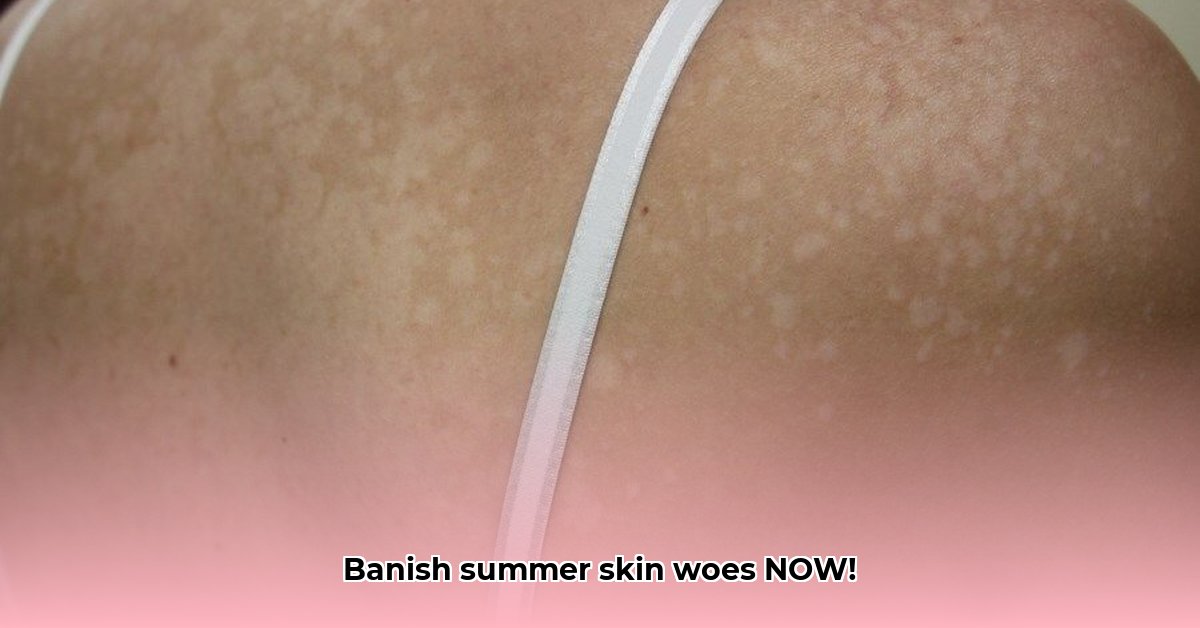
Hey there! Suffering from zomergist huid? (That's pityriasis versicolor in English – a common fungal skin infection). Don't worry, you're not alone, and it's totally treatable! This guide will give you the lowdown on causes, symptoms, treatment, and prevention, so you can get back to clear, healthy skin.
Understanding Zomergist Huid (Pityriasis Versicolor)
Zomergist huid is caused by a yeast called Malassezia, which lives on everyone's skin. Sometimes, this yeast gets a bit overzealous, leading to those annoying lighter or darker, slightly scaly patches. The good news? It’s not contagious, so you don't have to worry about spreading it. It's more of a skin irritant than a serious threat. Have you noticed small, discoloured patches, perhaps a bit itchy?
Diagnosis: What Your Doctor Will Do
Getting diagnosed is simple. Your doctor will usually make the diagnosis just by looking at your skin. They might use a Wood's lamp (a special UV lamp that helps make the patches easier to see). In some cases, a tiny skin scraping might be examined under a microscope to confirm the presence of the Malassezia yeast. It’s a painless procedure.
Treatment Options: Getting Rid of the Yeast
Several effective treatments are available. Your doctor will help you choose the one that's right for you.
Topical Antifungals: Putting the Cream to the Yeast!
These are often the first choice – creams and lotions applied directly to the affected skin. Common options include ketoconazole and selenium sulfide. Apply them once or twice daily for a few weeks, following the instructions carefully. They're generally well-tolerated, although some mild irritation is possible.
Oral Antifungals: For Stubborn Cases
For severe or persistent cases, your doctor might prescribe oral antifungals like itraconazole. These are stronger and more effective but have a slightly higher chance of side effects (though these are rare). You'll need to be monitored by your doctor.
Natural Remedies: Proceed with Caution
While many claim natural remedies work, robust scientific evidence is lacking. Don’t rely on them alone – always combine them with appropriate medical care under the guidance of your doctor.
Comparing Treatment Options:
| Treatment Type | Effectiveness | Potential Side Effects | Typical Cost |
|---|---|---|---|
| Ketoconazole Cream | Generally High | Mild irritation (rare) | Relatively Low |
| Selenium Sulfide | Generally High | Mild irritation (rare) | Relatively Low |
| Itraconazole (Oral) | Very High | Rare side effects | Higher |
| Natural Remedies | Uncertain | Allergic reactions possible | Variable |
Preventing Recurrence: Keeping Zomergist Huid Away
The good news? You can often prevent future outbreaks! Here's how:
- Hygiene Matters: Shower regularly with a mild soap and dry yourself thoroughly, particularly in skin folds.
- Medicated Shampoos: Regular use of a medicated shampoo (like selenium sulfide) can help control the yeast.
- Beat the Heat & Sweat: Excessive sweating can worsen the condition. Wear loose, breathable clothing and try to stay cool and dry.
- Loose Clothing: Avoid tight-fitting clothes that trap moisture against your skin.
When to See a Doctor
If your symptoms haven't improved within a few weeks of treatment, spread, or become very itchy, see your doctor. Early diagnosis and treatment mean less time battling those pesky patches.
Conclusion: Healthy Skin is Within Reach!
Zomergist huid is manageable. With effective treatment and consistent preventative measures, you can keep this mild skin infection at bay and enjoy clear, healthy skin. Don't hesitate to chat to your doctor or dermatologist if you have any concerns. They're there to help!